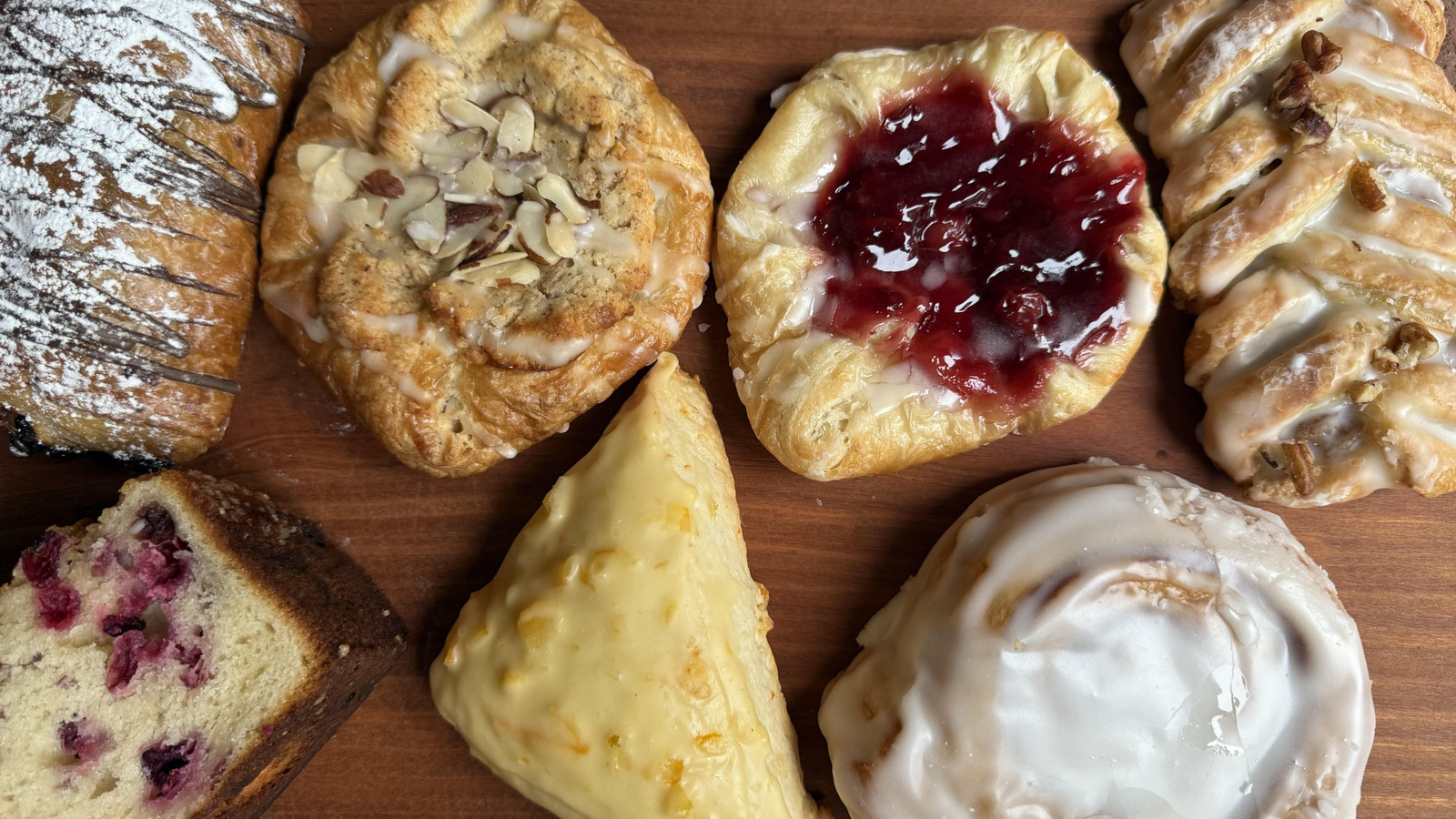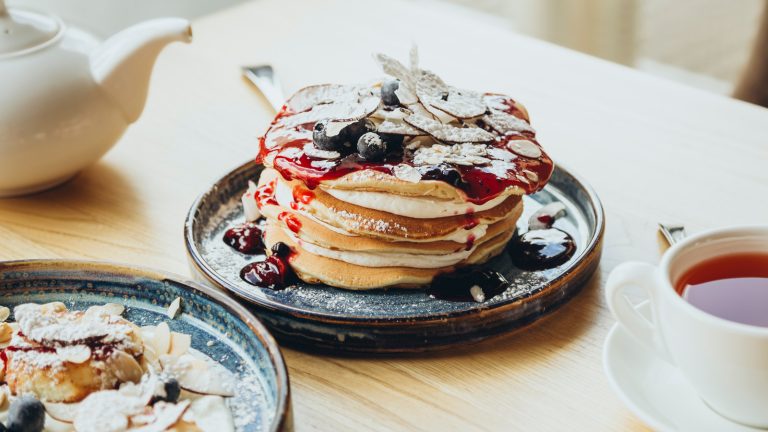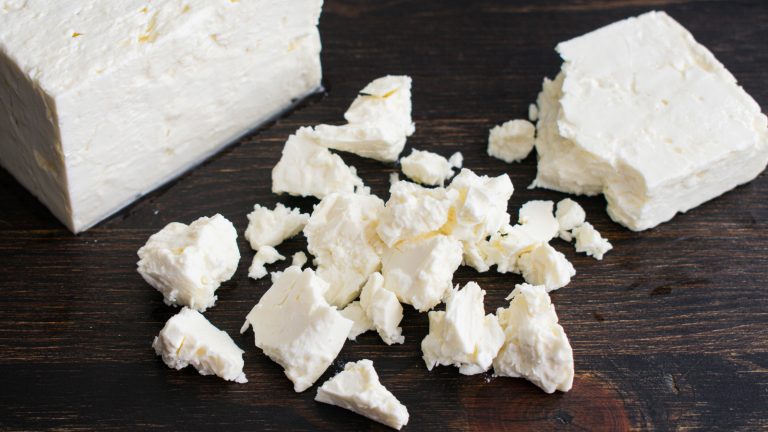Panera Bread currently has over 2,200 locations across the United States, making it a reliable option to get your pastry fix, whether you’re en route to work or stopping for a break on a long, leisurely road trip. You might indulge in sweet cravings after devouring a bowl of soup or on its own as an afternoon snack. Technically, a pastry must include flour, water, and some type of fat. The other criteria for pastryhood can be ambiguous; for instance, some folks consider cake a pastry, while others do not.
Several of the chain’s desserts can be classified as pastries, and for this review, I sampled the six products under the “pastries and sweets” section of Panera Bread’s menu, as well as the orange scone from its “muffins and scones” section. I ranked each treat according to its flavor and texture. More information on methodology can be found at the end of this article.
7. Almond pastry
The ingredients in Panera Bread’s almond pastry dough include flour, butter, water, yeast, sugar, eggs, and milk, and it is molded into a roughly circular shape. It is given a sweet, buttery, almond-flavored filling and criss-crossed with a white icing that carries notes of vanilla and lemon. To top it all off, the pastry is sprinkled with a small handful of sliced almonds.
This was the only treat out of the seven I tasted that I would strictly recommend against purchasing. For starters, it was not sweet enough, considering the blandness of the pastry’s other flavors. Although I typically enjoy desserts that are more subtly sweet, little was done to enhance the vibrancy of the filling or icing to forgo the need for sugar.
The almond flavor was lackluster and could have been improved with the addition of almond paste or almond extract. The zesty notes of orange or the burnt sugar flavor of caramel could have taken this dessert up a notch, too. The sliced almonds were concentrated in the center of the pastry, so I did not get to enjoy their textural contrast or flavor in every bite. Finally, the dough was far from outstanding and too dry for my liking.
6. Cherry pastry
Panera Bread’s cherry pastry could be considered a cherry Danish; all the right ingredients are present, including yeast, flour, sugar, butter, milk, salt, and egg. Nevertheless, I cannot speak for the chain’s preparation method. The dough of a traditional Danish is folded to create 27 layers, ensuring that the finished product is light and airy. Its outer layer should be slightly crisp, while its interior remains pillowy soft. Danish pastries can be dressed up with many sweet ingredients, including custard, apricots, and berries. Sweetened cream cheese is a common addition, too, whether by itself or alongside fruit.
To distinguish itself from the awful hotel breakfast Danishes that have scarred me for life, I would have liked to see a more unique filling in Panera Bread’s cherry pastry. For example, a sweet and spicy cherry tart with hot honey introduces savory flavors to the mix. Anything to cut down on the sweetness of Panera’s pastry would have done the trick — perhaps a dash of almond extract, a layer of creamy custard, or a smear of cream cheese filling. Furthermore, the dough was too dense and chewy at times. Despite its shortcomings, this pastry wasn’t all bad; I quite liked the occasional whole chunks of cherry that I found in the filling and the fact that it was not too tart.
5. Cranberry orange slice
It’s no secret that cranberries and oranges play together like the best of friends. Whether you are sipping on a cranberry orange crush cocktail or biting into a cranberry orange muffin, you’ll notice that the sweet, bright, and zesty notes of oranges help pacify the famously tart flavor of cranberries. The same holds true in Panera Bread’s cranberry orange slice, a basic cake that is a refreshing choice of dessert any time of the year, not just during the holidays.
Immediately, I noticed how this cake had a soft, moist crumb that contrasted wonderfully with its somewhat crunchy sugar topping. This can partly be attributed to the inclusion of sour cream in the cake’s ingredients list. The cranberries were tart and tangy, but not excessively so, and the sweetness of the cake helped mellow out any sharp flavors. The cake was not too dense and was instead characterized by an open crumb structure. While I enjoyed this pastry, it did not distinguish itself much from other cranberry orange cakes that I have eaten in the past. It would have been more noteworthy if, for example, it featured chocolate chips, walnuts, or cream cheese frosting.
4. Chocolate croissant
A chocolate croissant, also called a pain au chocolat, is like a normal croissant, but with the addition of chocolate. There’s one other slight difference: More often than not, a chocolate croissant is made in the shape of a rectangle rather than a crescent moon. As is the case with most pastries, patience and awareness are key for a top-notch chocolate croissant. For example, a baker must keep the dough cold while handling it, and they should bake the croissant long enough for the sugars in the dough to caramelize, but not so long that the croissant becomes dry.
Panera Bread’s chocolate croissant was somewhat lackluster in flavor, and I found myself yearning for a darker, more complex variety of chocolate. Additionally, pastry chef and chocolatier Jacques Torres prefers croissants that have had ample time to ferment, and so it comes as no surprise that Panera Bread’s policy of using par-baked croissants has resulted in pastries that are not nearly as heavenly as the ones you might buy from a local bakery that makes everything from scratch.
Harkening back to Torres’ point, the excessive density of this croissant could be a result of underproofing, though other factors, like lamination technique, could also be at play. Finally, this croissant was not flaky enough; like parties, the best croissants come with the inherent need to clean up afterward. It seems that Panera Bread traded in quality for cleanliness in this regard.
3. Orange scone
At its core, a typical scone will feature flour, butter, and/or cream, and leavening agents like baking powder and/or eggs. Despite this basic ingredient list, mastering the art of baking scones can be extremely difficult. For starters, scones look different in various parts of the world. A classic English scone is tender, slightly flaky, and usually not jazzed up with many sweet or savory ingredients. An American scone, on the other hand, tends to feature bold ingredients like cherries, cheddar cheese, or chocolate. On many occasions in the past, both in the U.K. and in the U.S., I have bought a scone hoping for a soft, buttery treat, only to be disappointed when I am handed a dense block of flour that requires me to chew a hundred times and take a giant gulp of water before I can swallow a single bite.
Thankfully, Panera Bread’s cream-based scone did not put me through the same rigmarole. Instead, I rather enjoyed its texture. It was neither too dense nor too dry — signs that this pastry’s dough was not overworked and that it contained the right ratio of liquids to dry ingredients. The dough was buttery with a hint of orange, and its richness was complemented by an even brighter orange flavor that pervaded the pastry’s glaze. Orange peel, natural orange flavoring, oranges, and orange juice concentrate all contribute to the scone’s citrus appeal. While I enjoyed a few small bites of this scone, I felt that it erred on the sweeter side and that eating the whole scone would therefore be a task rather than a treat.
2. Cinnamon roll
Cinnamon rolls are one of the most ubiquitous pastries in the U.S., and Panera Bread therefore has some tough competition with which to contend. For example, Cinnabon’s rolls are so famously delicious that the brand has partnered with chains like Wendy’s and Pizza Hut to offer its rolls in different formats. Meanwhile, homemade recipes allow bakers to add any number of fillings to their cinnamon rolls, and even use sourdough discard for a tangy twist. I appreciate that Panera Bread chose to develop its own recipe because I enjoyed what the brand came up with. It is simple and classic, yet incredibly satisfying.
Without being overbearing, the cinnamon flavor was dark and rich, flooding both my nostrils and the back of my throat. The filling was moist and not crumbly, and it was swirled within a softly baked dough. What I loved most about this roll, however, was its glaze. With natural lemon flavor wonf (with other natural flavors), the glaze provided bright, vibrant notes to each bite that helped balance the more woodsy, smoky flavors of cinnamon and brown sugar. Overall, this product is one of the better cinnamon rolls on the market and well worth a buy. My only critique is that its dough could have been a little fluffier.
1. Pecan braid
Panera’s pecan braid was by far my favorite pastry on this list. Fans of pecan pie will fall in love with this treat, and if you are counting down the months until Thanksgiving and Christmas, this pecan braid will make you feel like the holidays have already arrived. Braided pastries can be made using a handful of different ingredients and techniques. For instance, a sheet of basic pastry dough can be lined down the middle with fruits like peaches, apples, and blueberries, and/or a filling like cream cheese or chocolate. The edges of the dough may then be braided on top of the filling to neatly enclose all the ingredients.
In the case of Panera’s pecan braid, it was filled with a mixture of butter and pecans so that a rich, warm, and nutty flavor permeated the entire dessert. The dough was crisp on the outside, yet soft on the inside, and it was substantial enough not to fall apart with each bite. The roasted pecans scattered on top lent additional savory notes that were complemented by just the right amount of sweet glaze. I had no complaints about this dessert and look forward to eating it again.
Methodology
I ranked each pastry on this list according to the quality of its flavors and textures. Having eaten pastries around the world, including in Paris, France, I was able to compare these pastries both to their competitors and to the gold standards of their respective categories. I tasted all seven pastries side by side, on the same day that I purchased them. Neither price nor nutrition were factors in this review.





